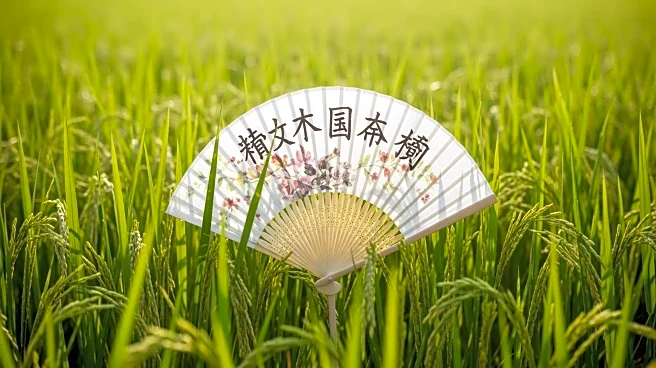What's Happening?
The Japanese agriculture ministry is planning to adjust its rice production policies under the new administration led by Prime Minister Sanae Takaichi. The ministry aims to forecast 7.11 million tons of
rice production for staple food in 2026, marking a 5-percent reduction from the current year's volume. This shift comes as a response to concerns over potential oversupply, which could lead to sharp price declines and dissatisfaction among farmers. Previously, Prime Minister Shigeru Ishiba had pushed for increased rice production to prevent shortages and reduce high prices. However, the current administration is moving away from this approach, aligning production more closely with demand. The ministry expects demand for staple food rice to range between 6.97 million tons and 7.11 million tons in 2026, similar to 2025 levels. The newly appointed farm minister, Norikazu Suzuki, emphasized the importance of aligning production with demand and avoiding irresponsible increases in output until the rice market expands steadily.
Why It's Important?
This policy shift is significant as it reflects a strategic change in Japan's approach to managing its agricultural resources, particularly rice, which is a staple food. By reducing production, the government aims to stabilize prices and prevent market disruptions that could negatively impact farmers. This decision could influence the agricultural sector's economic stability and affect international trade dynamics, as Japan is a major player in the global rice market. Farmers may face challenges adapting to these changes, and the policy could impact their income and production strategies. Additionally, the decision to refrain from distributing government reserve rice to curb prices indicates a move towards a more market-driven approach, potentially affecting consumer prices and availability.
What's Next?
The agriculture ministry plans to purchase approximately 210,000 tons from the 2026 harvest through pre-arranged contracts with farmers to replenish government reserves. If demand falls short, the ministry may buy surplus rice from the market. The ministry is also considering having private distributors hold part of the government stockpiles to mitigate distribution delays. Furthermore, there is a move to shorten the current five-year rice storage period, which could impact how reserves are managed and distributed in the future.
Beyond the Headlines
The shift in rice production policy may have broader implications for Japan's agricultural sector, including potential changes in farming practices and investment in climate-resilient crops. The decision to align production with demand could encourage more sustainable agricultural practices and reduce waste. Additionally, the policy may influence Japan's international trade relations, as changes in production levels could affect export strategies and global market dynamics.













